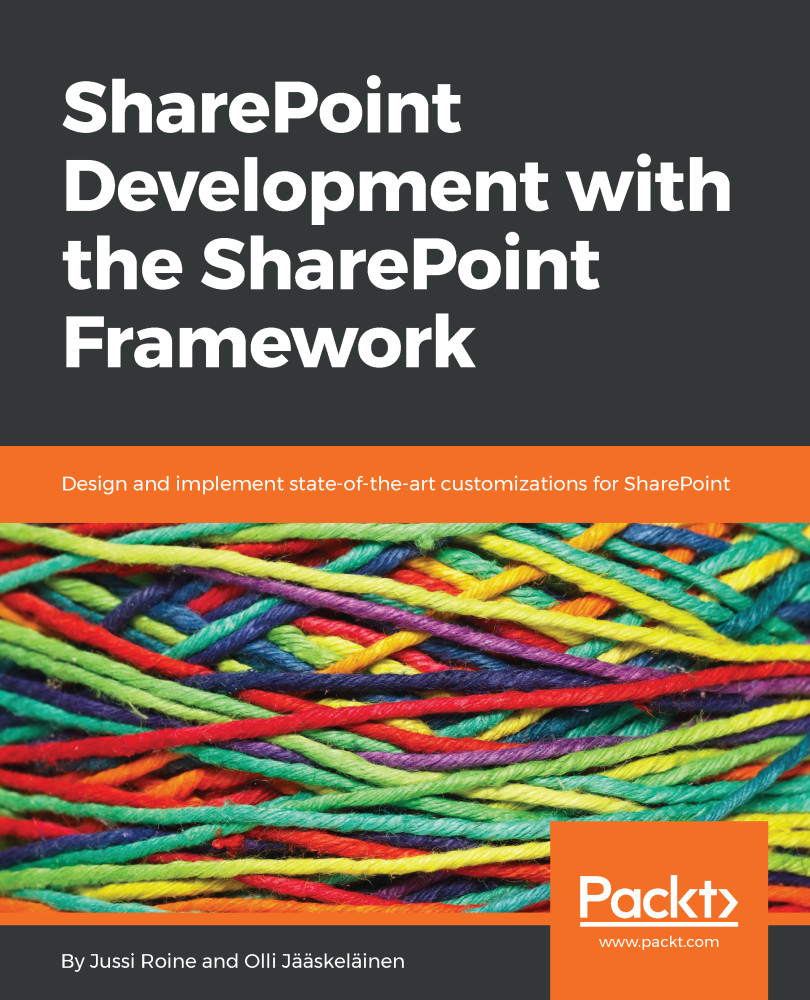In this chapter, we are focusing on working with SharePoint content. First, there is a high-level overview, and then we are going to learn how to use mock data in our web parts when you are running them from the local workbench. Then we are going to focus on how to work with SharePoint content using SPHttpClient; first, we will be accessing lists and then we will perform basic operations with list items.
During this chapter, we'll cover the following:
- Learn to access and work directly with SharePoint content
- Understand how we can use mock data while developing a solution and then later change it to real data
- Start using SPHttpClient to access SharePoint lists and do basic operations



